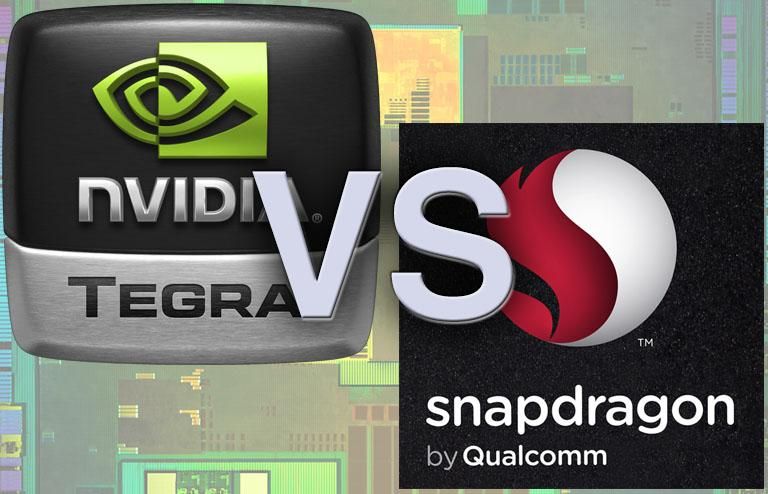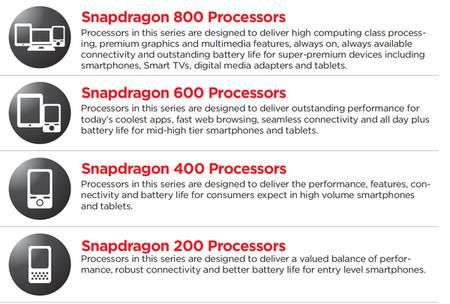NVIDIA isn't the only chip maker showing off new technology at this year's CES. Qualcomm has some news, too. Just incase you don't remember, Qualcomm makes the Snapdragon SoC and in particular the S4 line that powers our high-end smartphones and tablets.
To start with, Qualcomm is changing the naming scheme of their processors to help differentiate the powers and abilities of their various chipsets. The new 800 series is high-end, 600's and 400's are middle-tier, and lower-end chips are in the 200's. Let's focus on the higher-end goodies for a moment.
Qualcomm’s new SoC lineup has got you covered!
The Qualcomm 800-series will support high-speed LTE-Advanced connectivity — not just regular, "old-fashioned" LTE. It's also got the latest Wi-Fi standards covered. Where the 800 really shines is in its quad-core design, boasting speeds up to 2.3GHz. Remember the Tegra 4 that we talked about yesterday? It only runs at 1.9GHz. While that's nothing to scoff at, nearly half-a-gigahertz faster is impressive.
Although it might look like it on the surface, this battle isn't about CPU speeds at all. Don't be blinded by the real fight: graphics. Ultra HD (4K) is all over the place at CES 2013. While we're busy arguing whether 1080P screens on smartphones is overkill, the industry is moving boldly past 1080P into even higher high-definition. Make no mistake, this is where the SoC battle will be won or lost. Qualcomm is taking a different approach from NVIDIA in two very important ways.
CPU Speed
NVIDIA makes amazing graphics processors (GPUs), and packed 72 cores into their Tegra 4. Qualcomm is much better at making CPUs than GPUs and is putting their efforts in what they do best. That doesn't mean GPUs are second-class citizens. The 800 has an Adreno 330 GPU inside and the 600 uses an Adreno 320 GPU. For comparison, the Snapdragon S4 Pro in the Nexus 4 runs an Adreno 320 GPU.
Based on what we've been shown at CES 2013, the 800 doesn't have any problem pumping out Ultra HD (4K) video — but playback is only half the story there. The 800 will also be able to capture and record Ultra High-Definition video as well.
Power Consumption
All that takes power and usually drains your battery fairly quickly. Qualcomm claims that their new 800 SoC will operate with about half the power consumption of the S4 chips that we're running in our devices today. Will that equate to twice the battery life? Probably not, but hopefully it means that we probably won't see any reduction in battery life with the new super-high-end chips that we could see as early as second-half of this year.
While we're not likely to see any real-world benchmarks for at least a few months, this fight promises to be worth watching!
Image Credits: NVIDIA, Qualcomm


